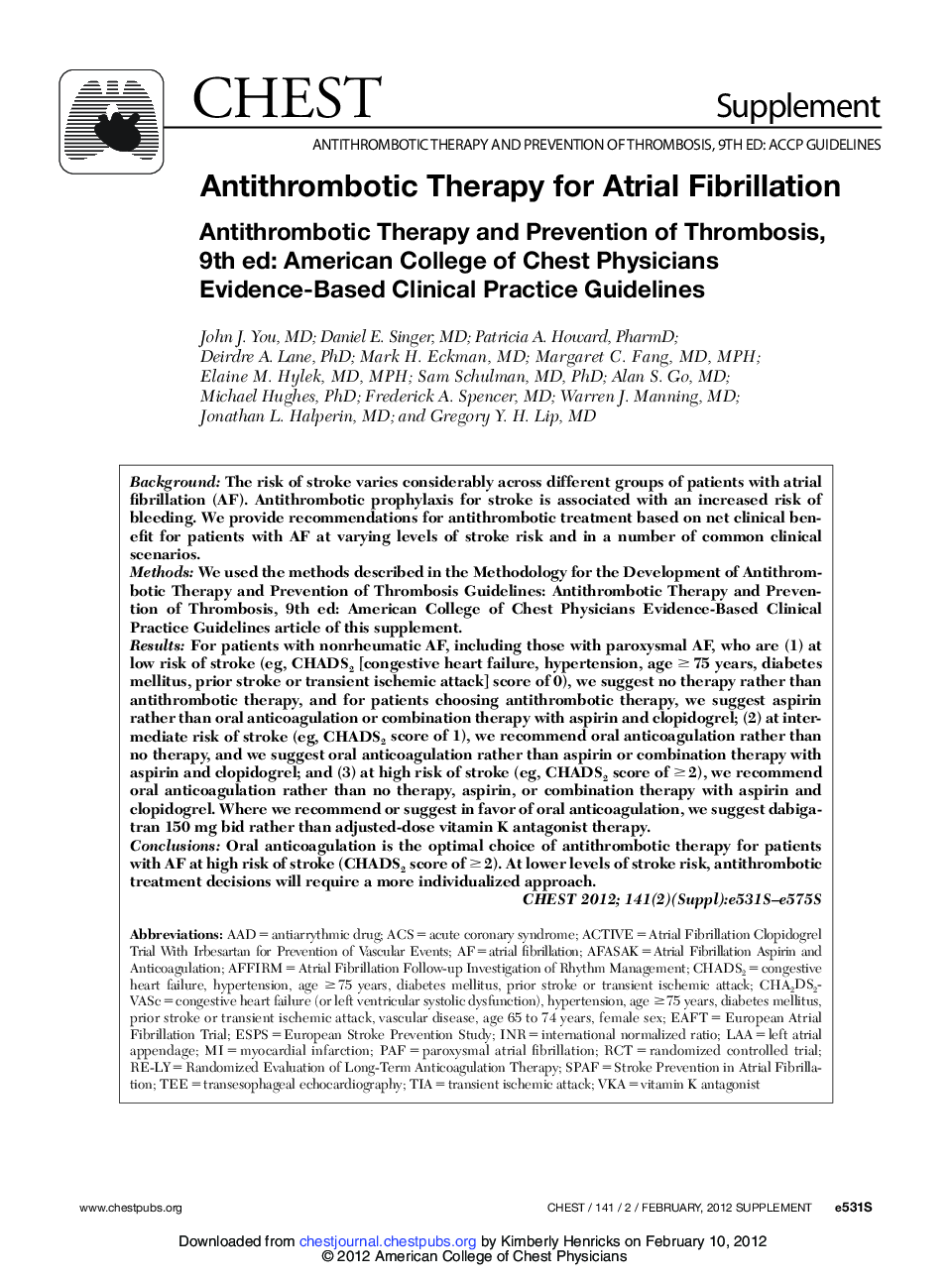| کد مقاله | کد نشریه | سال انتشار | مقاله انگلیسی | نسخه تمام متن |
|---|---|---|---|---|
| 2901314 | 1173349 | 2012 | 45 صفحه PDF | دانلود رایگان |

BackgroundThe risk of stroke varies considerably across different groups of patients with atrial fibrillation (AF). Antithrombotic prophylaxis for stroke is associated with an increased risk of bleeding. We provide recommendations for antithrombotic treatment based on net clinical benefit for patients with AF at varying levels of stroke risk and in a number of common clinical scenarios.MethodsWe used the methods described in the Methodology for the Development of Antithrombotic Therapy and Prevention of Thrombosis Guidelines: Antithrombotic Therapy and Prevention of Thrombosis, 9th ed: American College of Chest Physicians Evidence-Based Clinical Practice Guidelines article of this supplement.ResultsFor patients with nonrheumatic AF, including those with paroxysmal AF, who are (1) at low risk of stroke (eg, CHADS2 [congestive heart failure, hypertension, age ≥ 75 years, diabetes mellitus, prior stroke or transient ischemic attack] score of 0), we suggest no therapy rather than antithrombotic therapy, and for patients choosing antithrombotic therapy, we suggest aspirin rather than oral anticoagulation or combination therapy with aspirin and clopidogrel; (2) at intermediate risk of stroke (eg, CHADS2 score of 1), we recommend oral anticoagulation rather than no therapy, and we suggest oral anticoagulation rather than aspirin or combination therapy with aspirin and clopidogrel; and (3) at high risk of stroke (eg, CHADS2 score of ≥ 2), we recommend oral anticoagulation rather than no therapy, aspirin, or combination therapy with aspirin and clopidogrel. Where we recommend or suggest in favor of oral anticoagulation, we suggest dabigatran 150 mg bid rather than adjusted-dose vitamin K antagonist therapy.ConclusionsOral anticoagulation is the optimal choice of antithrombotic therapy for patients with AF at high risk of stroke (CHADS2 score of ≥ 2). At lower levels of stroke risk, antithrombotic treatment decisions will require a more individualized approach.
Journal: Chest - Volume 141, Issue 2, Supplement, February 2012, Pages e531S–e575S